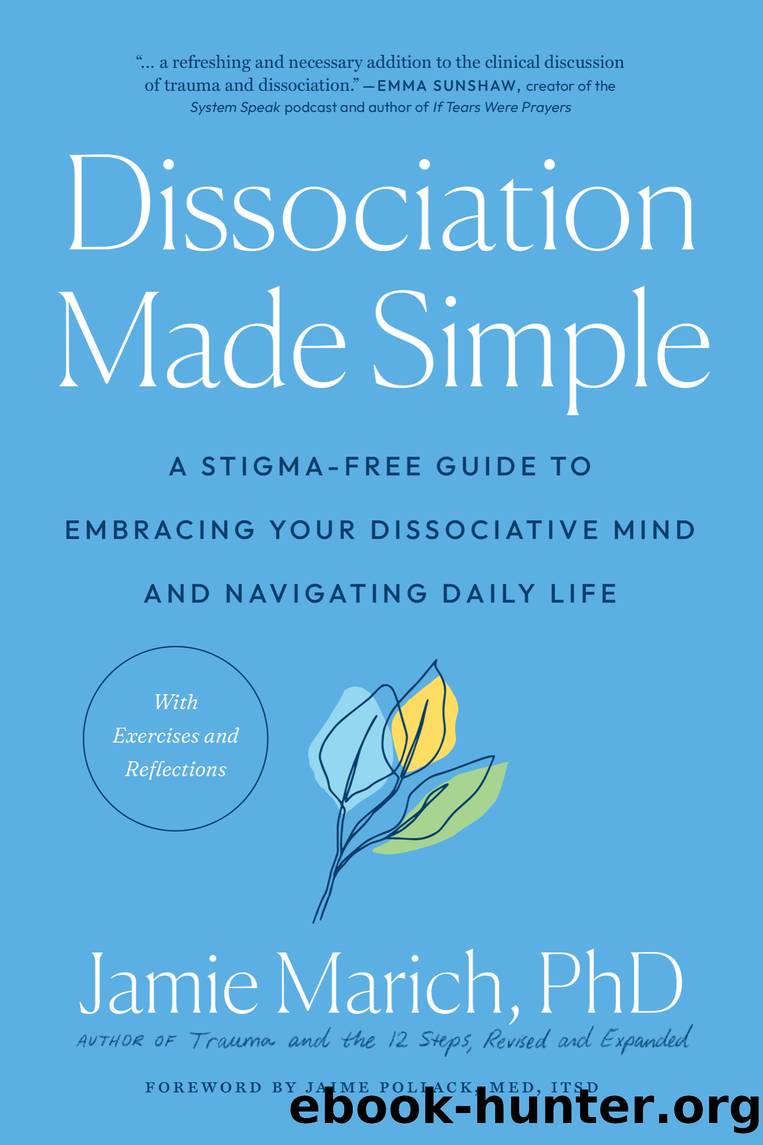Dissociation Made Simple by Jamie Marich

Author:Jamie Marich [Marich, Jamie]
Language: eng
Format: epub
ISBN: 9781623177225
Contributors with a Previously Identified System Reporting Integration
As Amy Wagner said in her interview, âIn our world, integration is an ugly word.â While this is the case for most people Iâve met in the DID and dissociative disorders community, we have to be mindful not to project our triggers around the word onto others. Yes, integration in the classic sense can be described as bringing all of the parts together as a unified alloy. Even as I type this I wince, noting that I would never want that. Yet over the years of my own healing, our system has become more and more cooperative. This cooperation allows my brain to feel more integrated if we are defining integration as the brains of the triune brain working together. Remember, Dorothy needed all of her friends in The Wizard of Oz to help her to get home.
So it could be in our circles of healing that we may need to redefine integration, or, as we will do in this section, listen to the voices of contributors who describe themselves as having reached a sense of integration. For Dr. Kirsten Koenig, a Blackfeet therapist treated for an extensive complex and intergenerational trauma history, the language of system used to resonate for her, and she even had a metaphor. She explains, âI feel that I used to operate as a system for most of my adult life. I even likened my different faces to facets of a diamond. This always made me feel like the parts werenât a bad thing.â Yet more recently, after a major life-threatening trauma described in chapter 3, she was able to accept the parts of her as all of her. Using another metaphor, she said that this was like knowing all the branches of her tree. She continued, âI went back and picked up my pieces, I had to find them, which means I had to feel them.â
Dianne Harper, a spiritual director, aged sixty-four at the time of her interview, was diagnosed with DID thirty years ago. During her interview, she commented, âItâs so cool to say that out loud to someone who knows what Iâm talking about!â She said that in her healing, integrating the parts was not her original goal, although it gradually started to happen and to her knowledge, at this moment, she is fully integrated. In reflecting back, she remembers having six parts: another version of her pre-integration, the Center (a dancing and playful part who dissociated like ânormal people doâ), the Warrior (like the goddess Diana), the Good Girl (who came out whenever she needed to be compliant), the Wild Child (acting out), and Rose (her youngest part, who was the last to integrate).
Dianne explains, âRose was very feral-like, she referred to herself as the secret keeper. Over time she became more beautiful and then one day, when I was about forty-seven, she was gone.â When I asked her to elaborate, Dianne offered, âThere was a hole in my brain and something was missingâthat voice we were used to communicating with.
Download
This site does not store any files on its server. We only index and link to content provided by other sites. Please contact the content providers to delete copyright contents if any and email us, we'll remove relevant links or contents immediately.
Should I Stay or Should I Go? by Ramani Durvasula(7560)
Why We Sleep: Unlocking the Power of Sleep and Dreams by Matthew Walker(6618)
Fear by Osho(4655)
Flow by Mihaly Csikszentmihalyi(4633)
Rising Strong by Brene Brown(4377)
Why We Sleep by Matthew Walker(4358)
The Hacking of the American Mind by Robert H. Lustig(4318)
How to Change Your Mind by Michael Pollan(4288)
Too Much and Not the Mood by Durga Chew-Bose(4270)
Lost Connections by Johann Hari(4088)
He's Just Not That Into You by Greg Behrendt & Liz Tuccillo(3830)
Evolve Your Brain by Joe Dispenza(3608)
The Courage to Be Disliked by Ichiro Kishimi & Fumitake Koga(3407)
Crazy Is My Superpower by A.J. Mendez Brooks(3328)
In Cold Blood by Truman Capote(3304)
Resisting Happiness by Matthew Kelly(3300)
What If This Were Enough? by Heather Havrilesky(3270)
The Book of Human Emotions by Tiffany Watt Smith(3235)
Descartes' Error by Antonio Damasio(3229)
